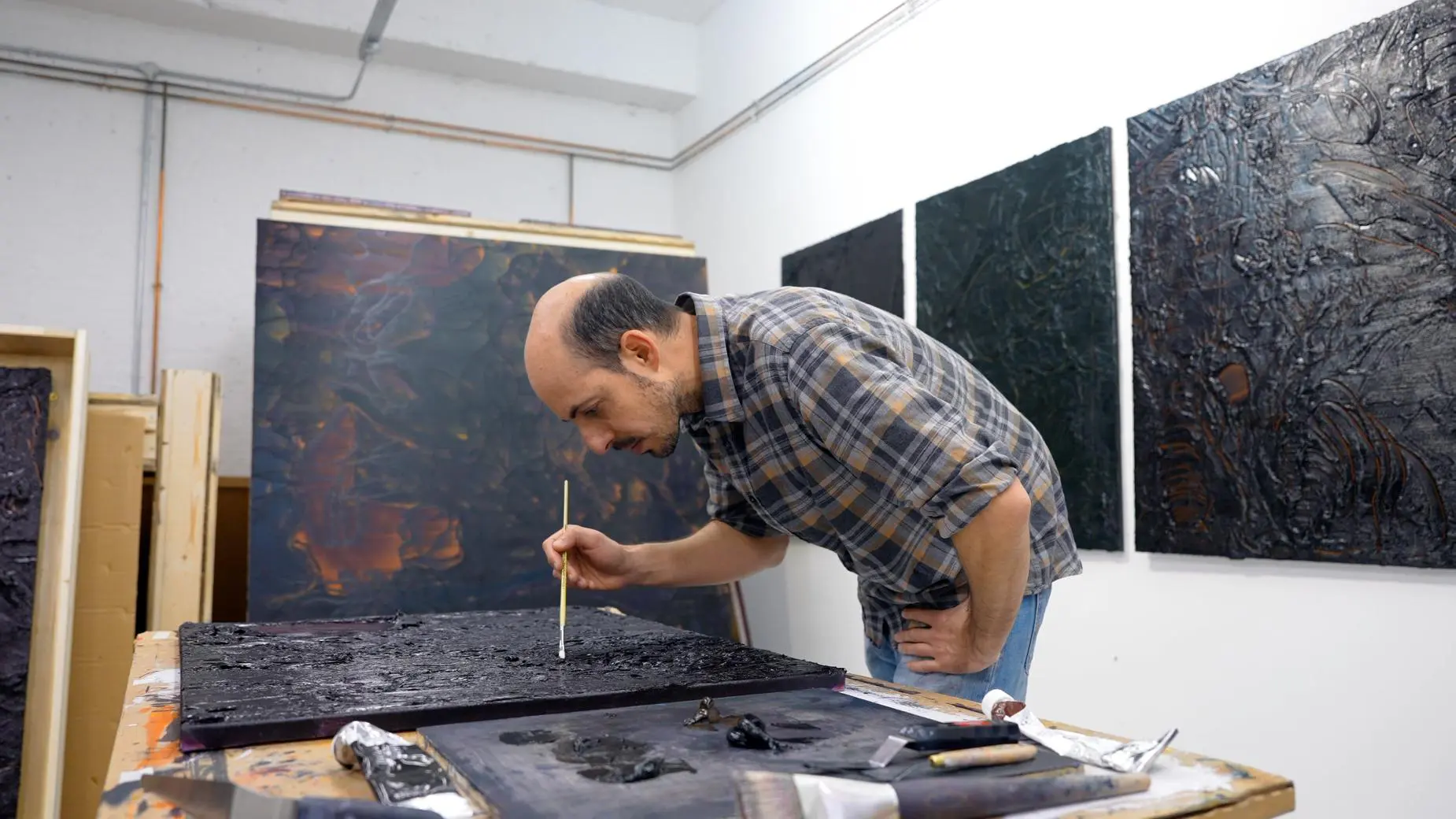Antonio Pichillá draws on his heritage and surroundings to produce work. Born in San Pedro La Laguna, where he still lives and works, the Guatemalan artist of Maya Tz’utujil background employs mostly textile in his practice, though he occasionally flirts with other forms of sculpture, as well as with video. Noteworthy, weaving is an activity primarily associated with women, and his own introduction to this universe came from his mother, who is a weaver1. While Pichillá was studying art at the Escuela Nacional de Artes Plásticas Rafael Rodríguez Padilla in Guatemala City in the early 2000s, one of his tutors, Roberto Cabrera, encouraged him to look at such ancestral knowledges for inspiration, and textile has been the protagonist of his work ever since. In In front of the lake, Pichillá showcases a group of new and recent textile works, as well as a video.
The latter, Weaving the Landscape (2020), depicts him weaving in massive proportions, using naked tree trunks stacked on the shores of Lake Atitlán as a warping frame. Carrying thick threads of fabric, his body moves around the columns graciously, creating a choreography that emulates the movement of a serpent. Placing the lake as central to the narrative – the same lake present in the title of the show, as well as the name of his birthplace (Laguna) – the video epitomises the artist’s deep entwinement with nature.
‘At’it’’, in the Maya-Tz’utijil vocabulary, means grandmother – a figure associated with ideas of comfort and nourishment within his cosmogony, and indeed within any cosmogony in the world, East and West, North and South. By naming his show In front of the lake, the artist celebrates the grandmother both as a physical being and as a metaphor, dimensions that are levelled as essential sources of life. Grandmother is further used as an umbrella title for a series of works where Pichillá tries different techniques with the warping frame. He explains, ‘over the surface of a canvas, I place threads going into different directions, joining various strands and maguey fibres, and then wrapping them over a stretcher. For the textile pieces, I made braids using thread fringes, resembling a grandmother!s hairdo’. The artist continues, ‘currently, it is indigenous women who are resisting, protecting and embracing the use of traditional clothing in Guatemala!s Maya communities’.
The artist also reverences the grandfather figure (interestingly called ‘M’ama’ in Maya-Tz!utijil) in works whose starting point are the traditional trousers worn by men among his village. Originally white with geometric black marks, Pichillá dyes them in different colours – most notably, black, yellow, and red, which alongside white, makes up for the four colours associated with corn in Guatemala. The same trousers become flag-like objects in works of the Kukulkán series. The often colourful belt that would hold the trousers together is sewn to the centre of this flag pattern, becoming an emblem that resembles a snake – more precisely, the flying serpent Kukulkán. Pichillá delves further, ‘Kukulkán is a pre-Hispanic deity, also known as Q’uuq’ Kumatz in the Popol Wuuj. Kan is one of the days in the Maya calendar, representing balance and justice. Shaped in the form of a plumed serpent, it refers to the divinity of the bird in the sky, and of the serpent on earth’.
The geometric pattern of the male trousers pop in several of Pichillá’s artworks, though not always in its embroidery form. Wind (2019) recreates the motif through paint on canvas, a surface which is then used as background for a structure of nails and thread shaped as an ‘X’. In a more recent work from the Wind series, dated from 2022, Pichillá uses a green fabric as background to the ‘X’ shape that characterises the series, now made of colourful belts. He explains, ‘men!s trousers from San Pedro La Laguna are embellished with handmade embroidery in the shape of an “X” which symbolises, within the elements representing the wind, two directions. Following a brief inquiry, I learned that for our grandmothers, the “X” is the air of Lake Atitlán, since this element comes in from two directions: North and South’. As per his signature style, nature and tradition come together to inform the work.

